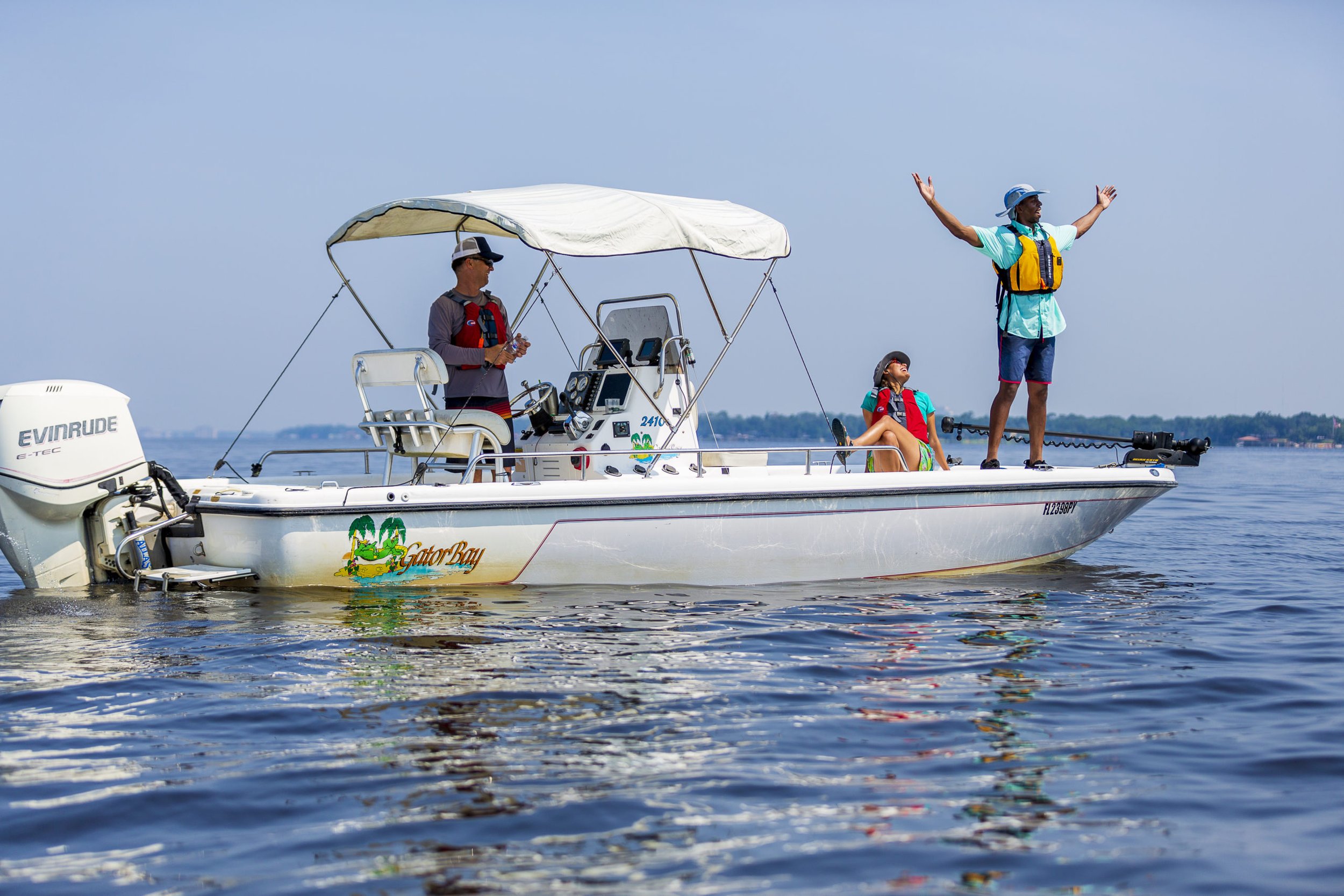HOW DO YOU STAY SAFE ON A BOAT?
Most of the injuries people on boats suffer are often preventable by taking a few simple precautions. An understanding of boating regulations and a safety checklist for reference will ensure that passengers are safe onboard.
Check out these helpful tips every boater should know to stay safe while out boating.
LAUNCH THE BOAT SAFELY
Safety starts at the boat ramp, so be prepared for your trip before you get there and make sure the boat is fitted with all necessary safety equipment.
Check the boat is ready to use and most importantly make sure the bungs are in.
Practice proper etiquette when at the ramp, wait your turn and don't block the ramp for other boaters. Once the trailer’s back wheels are submerged, carefully lower the boat into the water, and use a rope to control the boat once off the trailer.
EMBARK A BOAT CORRECTLY
Avoid any unnecessary injury by boarding the vessel the right way. Use the ladders, transom doors and entryways provided if possible.
If embarking onto a vessel from the dock, keep your hands free and carefully swing your legs over the rails or gunwales. If you need assistance, lock wrists with someone on board that can bring you over.
WEAR LIFE JACKETS
Life jackets are the most important equipment on any recreational vessel to keep passengers safe. We recommend you wear one at all times when underway and it is required by law in many countries that vessels must carry enough approved lifejackets for everyone on board.
There is always a risk of rough seas and a person-overboard situation could happen if travelling at fast speeds. Should you be ejected from the boat, a life jacket will help you stay afloat even if unconscious.
FOLLOW BOATING NAVIGATIONAL RULES
Make sure the vessel operator understands the rules and laws of navigating the waterways. Keep a proper lookout by observing boat traffic and navigational hazards such as rocks or submerged objects.
Operating at a safe speed ensures that passengers stay safe on board, and are all sitting down to prevent person-overboard situations.
As operating a vessel while inebriated is a leading contributor to fatal boating accidents, stay sober. Drinking impairs judgement and awareness.
LOOK OUT FOR POTENTIAL HAZARDS
Be aware of booms, stray ropes and other hazards on a sailing boat. Moving about the cockpit is particularly challenging especially when travelling at speeds.
On other vessels, ensure there is comfortable seating for passengers and handrails from them to hold when conditions get bumpy. Inspect the boat for any stray nails, loose timber and damp furnishings.
Check for harmful fumes. Engines emit carbon monoxide, a dangerous gas that can make you sick in seconds and kill you in minutes. Ventilate enclosed spaces and be aware of leaks and smells to ensure it does not accumulate in and around your boat unexpectedly and knock you or your guests unconscious.
DOCK PROPERLY
Docking can be a challenge depending on the conditions. Have bumpers out as you approach the dock to prevent damage to your boat. Reduce your speed as your near close and have docking lines ready to go. If there is strong wind about, approach with care, let the boat slowly drift to the dock and secure it with lines.
Keep passengers in their seats while performing dock procedures so that no one gets caught between the boat and the dock.
Depending on the experience of those on board, we recommend you review boating safety rules and practices before leaving the dock. Perform a pre-departure checklist to ensure everything is safe on board, and check the route and weather conditions before going out.



